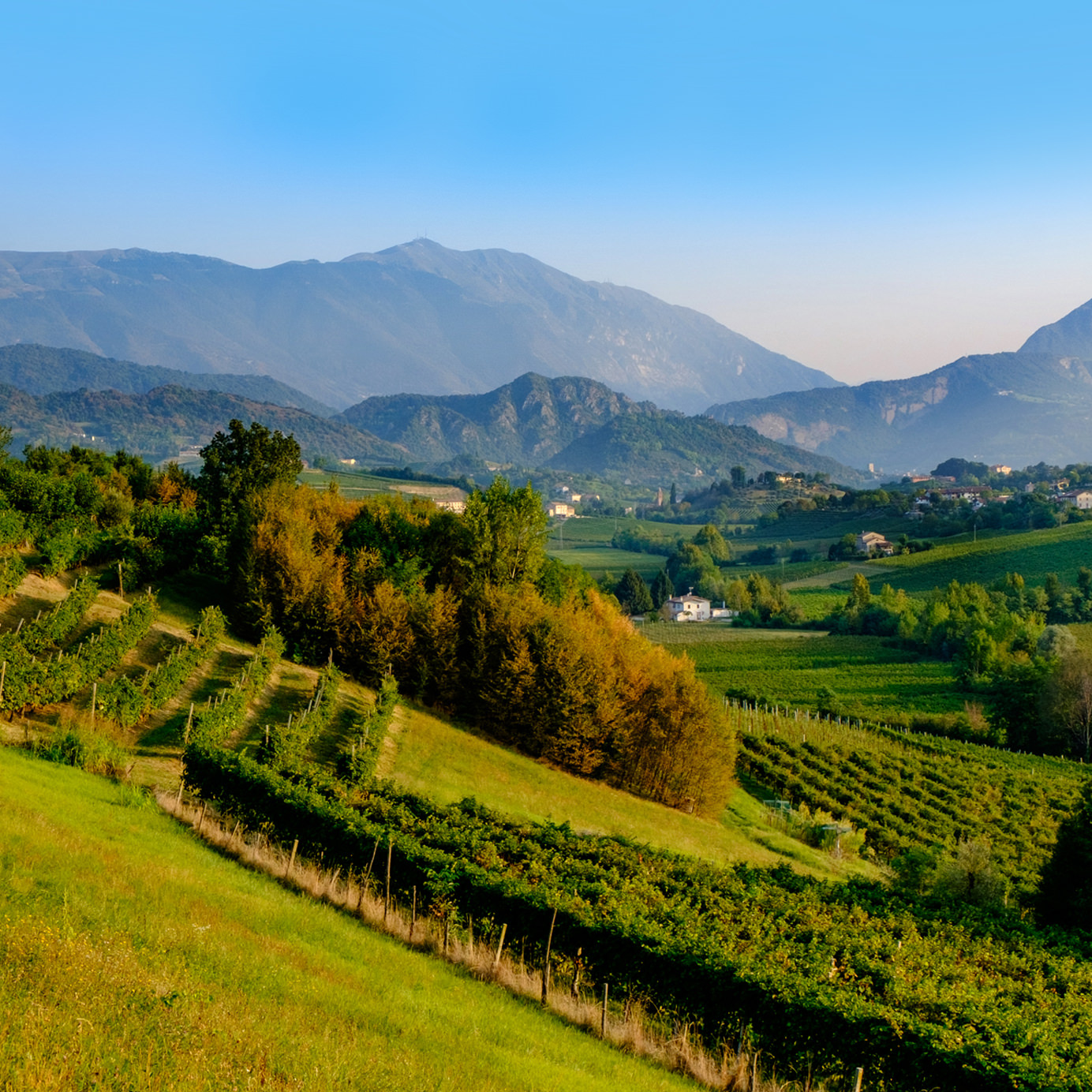If the first thing that comes to mind when you hear Prosecco is a raucous, Mimosa-filled brunch, you aren’t alone. For many Americans, value is the name of the game in the large Prosecco category, where many bottles cost $10 to $15 and can be found at the average liquor shop or grocery store.
That’s why it might come as a surprise to learn that the three most expensive Italian vineyards are in Barolo, Barbaresco, and… Prosecco? Meet Cartizze, Prosecco’s top cru.
The Prosecco DOC covers vast swaths of land across Veneto and Friuli-Venezia Giulia, which is how big-brand producers can produce plenty of it at bargain prices. But a particular area of vineyards just north of Treviso has long been considered superior to the rest, leading those in the know to seek out Conegliano Valdobbiadene Prosecco for top bottles.
Recently, wineries have taken that specificity one step further, highlighting a specific hill within the Conegliano Valdobbiadene zone, just outside the town of Valdobbiadene.
This is Cartizze, considered the “grand cru” of Prosecco, a 106-hectare area of vineyards planted on steep slopes. A combination of marine-rich soil covered in clay, good sun exposure, and a microclimate that leads to slow ripening makes this the most expensive sparkling vineyard land in the world. A hectare (equivalent to about 2.5 acres) would sell for anywhere from 1.5 to 2.5 million euros right now, but even if producers have the money, they likely can’t buy Cartizze land.
“Over the last few years, there have not been any hectares of Cartizze sold,” Alessio del Savio, head winemaker at Mionetto in Prosecco, says. “If someone sells ‘a piece’ it is really just a piece.”
To put that in perspective, that’s more expensive than the most lauded sparkling vineyard land in the world: Champagne, which averages around 1 million euros per hectare. Vineyards in Napa Valley sell for around $750,000 to $1 million per hectare, while land in the prized Left Bank Bordeaux appellations of Saint-Julien and Margaux averages around 1.2 million euros per hectare. So why is Cartizze worth this much money?
“The area ensures a greater concentration of aromas and flavors, and the possibility of giving the wine a more amiable and dense taste without compromising freshness,” Gianluca Bisol, president and CEO of Bisol in Prosecco, says.
Expensive vineyards translate to expensive wines, which is why it’s rare to see a bottle of Barolo or Barbaresco on the budget shelf. More bottles labeled with the Cartizze cru land stateside each year, typically with more complexity and, yes, a higher price tag. Even large-scale, value-oriented brands are getting in on the action, like La Marca and Mionetto, both of which likely purchase Cartizze fruit from smaller growers.
The move toward increased vineyard specificity isn’t unique to Prosecco, evidenced by the breakdown of Paso Robles into sub-AVAs or the move by Argentinian producers to label wines according to their distance from the ocean. While the strategy theoretically helps consumers suss out quality, more appellations and labels to memorize could also serve to confuse the casual wine enthusiast and justify higher prices for big- brand wineries.
Particularly now that larger producers are getting in on the Cartizze game, it remains to be seen whether the appellation will serve to indicate quality on a label or merely jack up the price for consumers. For now, try these three Cartizze wines to test out the juice for yourself.
Bisol ‘Cartizze’ Valdobbiadene Superiore di Cartizze 2015
While this bottle leads with fruit, the finish is soft and minerally. Average price: $40.
Le Colture ‘Cartizze’ Prosecco di Valdobbiadene Superiore NV
This bottle leads with richness and finishes with fine, lean acidity. Average price: $30.
Mionetto ‘Cartizze’ Valdobbiadene Superiore di Cartizze NV
Straightforward and easy-drinking, the Mionetto is fruit-forward but clean. While it lacks the complexity of the other two Cartizzes, it is much easier to get your hands on. Average price: $35.
